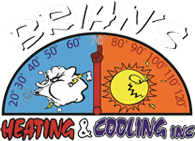Central heating and cooling systems are fixtures in most newly built homes across the United States. As you may know, central HVAC systems use long stretches of hollow, insulated ducts to carry air to and from HVAC units. Although duct sealing is often undervalued by homeowners, HVAC professionals insist that duct sealing is a necessary measure for keeping central heating, ventilation, and air conditioning systems in good shape.
Understanding What Ducts Are Made Of
Although there are other options, the HVAC industry typically sticks to three types of air ducts: duct board, metal ducts, and flexible ducts. Duct board and metal ducts are sturdy and rigid, often reserved for large-scale commercial and industrial use. Flexible ducts, also called flex ducts, are most commonly used in residential capacities.
To make flexible ducts, manufacturers wrap a thin layer of plastic around a thin wire coil. Fiberglass, an effective insulator, is sprayed over this plastic. Finally, these ducts are encapsulated with metallic vinyl or foil.
Unlike their rigid counterparts, flexible ducts are especially prone to punctures. Bugs, rodents, and natural wear and tear can all cause rips, tears, and holes in ducts. Even the most well-guarded homes are prone to duct puncturing.
Problems Caused by Unsealed Ducts
When left unsealed, punctured ducts can cause a myriad of issues. Unsealed ducts increase the likelihood of high utility bills, simultaneously leaving a more distinct carbon footprint behind and forcing your HVAC system to work harder, shortening its lifespan.
Unsealed ducts are also known to increase the prevalence of carbon monoxide inside homes. Even worse, they can even reduce indoor air quality, spurring symptoms of seasonal allergies.
Types of Duct Sealing
Traditionally, HVAC professionals have sealed ducts by manually inspecting them and applying duct tape or putty-like duct sealants. Aeroseal, patented technology for sealing ducts, is Brian's Heating & Cooling, Inc.‘s go-to method for sealing ducts. The Aeroseal process consists of pressurizing your HVAC system, using a safe aerosol to detect leaks and using a proprietary sealant to plug them.
Serving the greater Madera area, our team at Brian's Heating & Cooling, Inc. is well-versed in sealing residential ductwork. If you need help with duct sealing or any other HVAC issue, call us!

